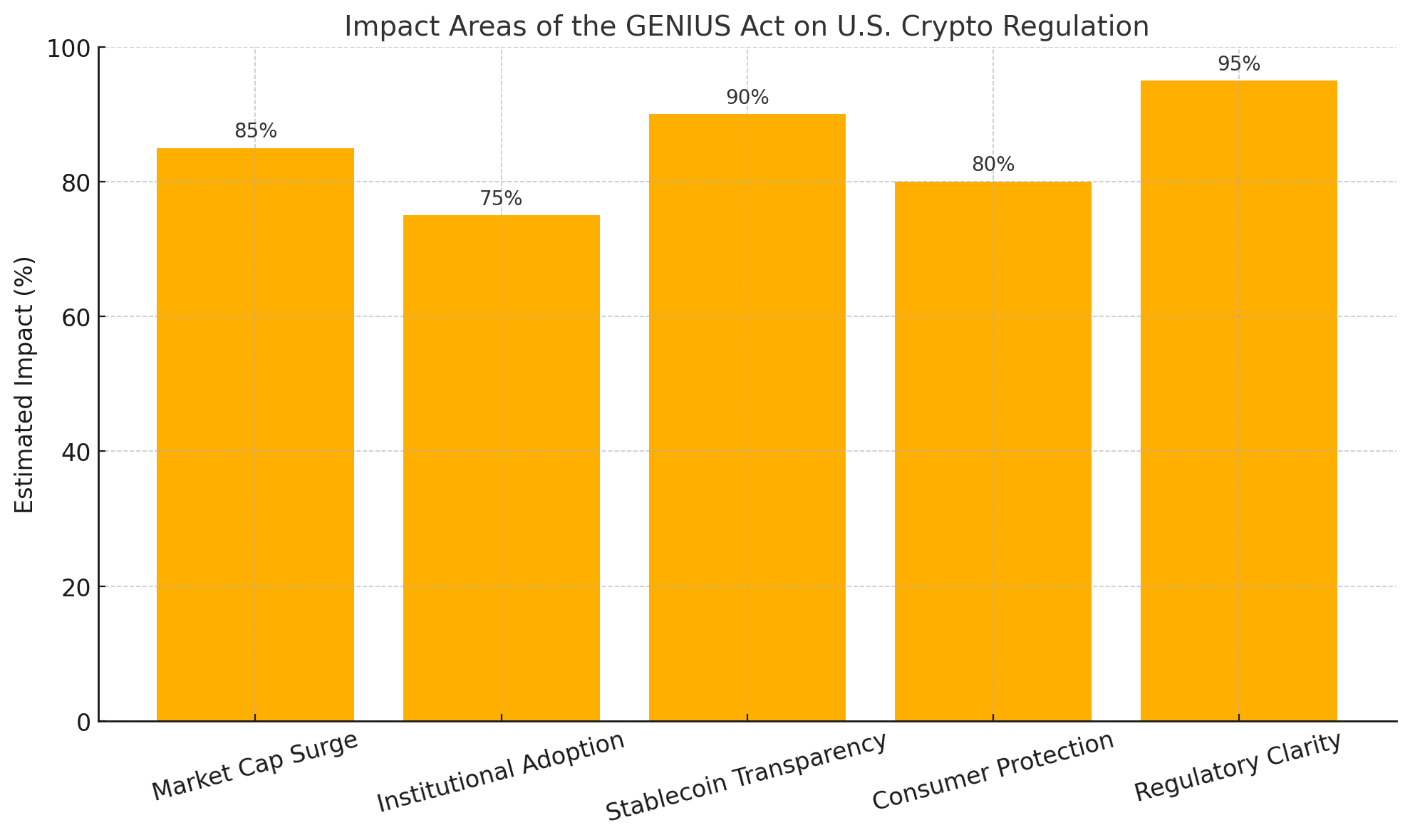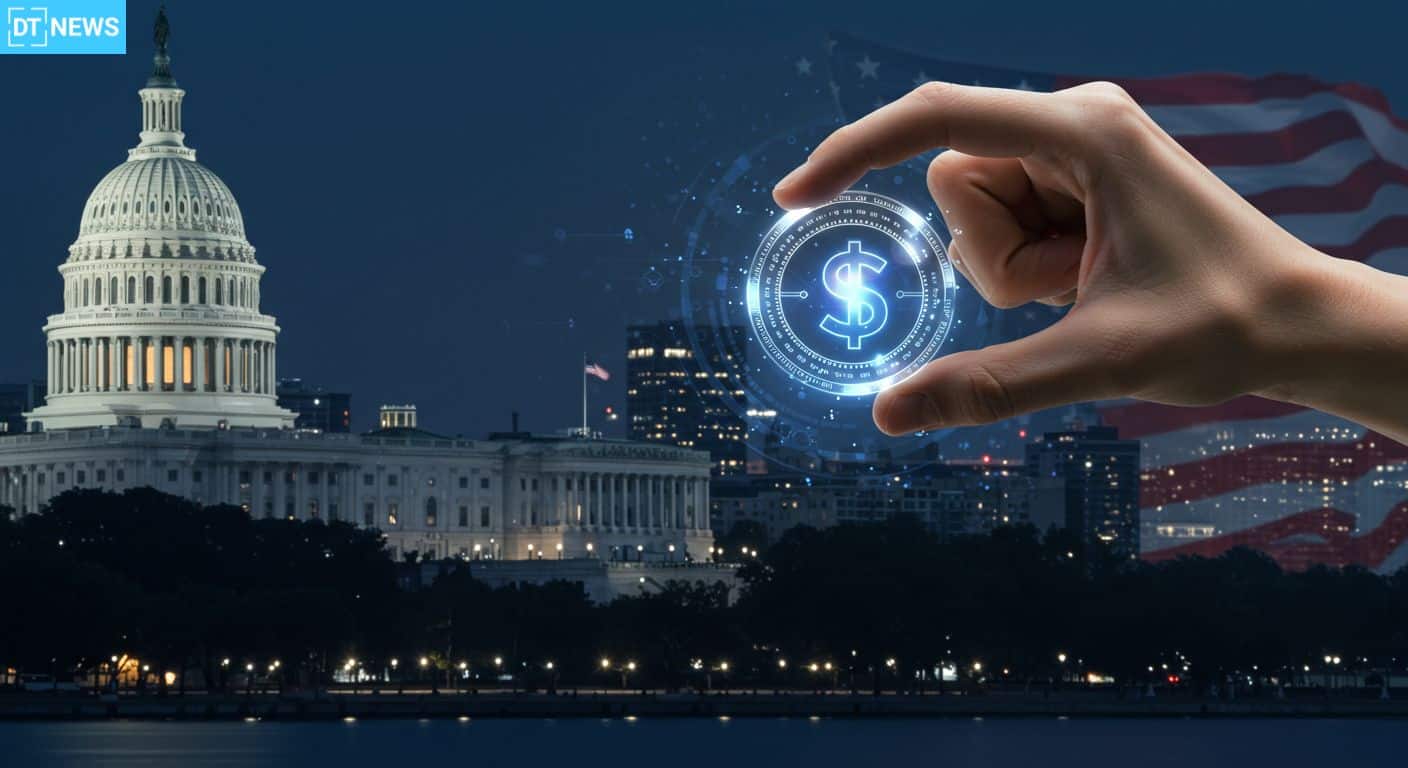President Donald Trump signed the GENIUS Act into law on July 18, 2025. This first-of-its-kind stablecoin law provides clarity and supervision in a sector long marred by regulatory uncertainty.
As stablecoins, digital assets tied to fiat currencies such as the US dollar, increase in impact and market value, the GENIUS Act seeks to bridge the gap between innovation and investor protection, therefore enhancing consumer trust and ensuring financial stability.
What Is the GENIUS Act?
The GENIUS Act (Guiding and Establishing National Innovation for US Stablecoins Act) creates a comprehensive legislative framework for “payment stablecoins” in the United States. Prior to this rule, stablecoins functioned with no control, often causing market instability, such as the crashes of Terra, Tether, and Circle.
The Act now imposes rigorous requirements on issuers, including full 1:1 reserves in cash or short-term Treasuries, monthly audits, and licensing only for recognized institutions, banks, nonbank companies regulated by the OCC, or state-chartered issuers with federal criteria.
The GENIUS Act eliminates uncertainty over SEC or CFTC jurisdiction by clearly defining what constitutes a payment stablecoin, putting enforcement primarily in the hands of federal banking authorities (OCC, FDIC, Federal Reserve). The Act also applies control to international issuers that want to service US clients, ensuring equivalency with domestic requirements.
A Legal First for Stablecoin Issuance
The GENIUS Act profoundly alters the legal environment.
Permitted Issuers: Stablecoins may only be issued by licensed businesses, guaranteeing regulatory compliance.
Extraterritorial Coverage: To operate in the United States, foreign issuers must comply with US supervisory rules, such as OCC registration and the maintenance of US-based reserves.

Audit and Transparency: Issuers must undertake monthly public audits and separate reserves to increase transparency and reduce risk.
This paradigm represents a significant move from enforcement-by-enigma to regulation-by-design, bringing clarity to both traditional financial institutions and emerging cryptocurrency-native businesses.
Protecting Consumers and Financial Integrity
The GENIUS Act emphasizes investor security as consumer demand surges and the stablecoin market capitalization exceeds $250 billion.
1:1 Reserves and No Interest: Issuers are barred from paying interest on stablecoin balances, which prevents hidden yield traps.
Redemption Priority: In the case of an issuer insolvency, stablecoin holders enjoy priority claims over other creditors.
Misleading marketing is prohibited: It is forbidden to claim that a stablecoin is backed by the United States government, insured, or legal money.
AML and Sanctions Compliance: Licensed issuers are classified as financial institutions under the Bank Secrecy Act and FinCEN rules.
Market Momentum and Industry Transformation
The industry and investment response has been swift:
Market Expansion: Stablecoin adoption is projected to boost cross-border payments, digital commerce, and investment inflows.
Institutional Entry: Major institutions, like Bank of America and JPMorgan, are considering stablecoin supply under the new structure.
Bitcoin surged past $118k, while Ether topped $3,500 after the Act’s signing.
Expert Analysis: Analysts warn about potential systemic concerns, such as ripple effects in the Treasury market, but consider the law as a step toward international legitimacy.
The GENIUS Act legitimizes stablecoins via unambiguous law, opening up new avenues for innovation in decentralized finance and attracting institutional-grade risk frameworks.

What’s Next: Implementation & Global Influence
Although the GENIUS Act is already legislation, its real-world effect is dependent on implementation:
Rulemaking Timeline: Regulators have 180 days to create implementing rules. Full legal effect occurs 120 days after the final regulation or on January 18, 2027, whichever comes first.
Transition Period: Digital asset platforms (exchanges, custodians, and wallets) must be compliant within three years.
Global Dialogue: The US action might compel G20 policy cooperation, changing global digital currency norms.
Furthermore, other laws, including as the CLARITY Act and the Anti-CBDC Act, are being considered, with the potential to supplement or widen crypto policy on topics such as token categorization and central-bank digital currencies.
Conclusion: A New Chapter for Crypto Regulation
The GENIUS Act represents a paradigm change. The United States now requires bank-level precautions, open audits, and bankruptcy-holder protection for stablecoin issuance. This legislative milestone promotes regulatory predictability, innovation, and consumer safety.
While detractors point to unanswered uncertainties, such as accounting rules and potential systemic risk in Treasury markets, the law’s implementation has already sparked institutional interest and market optimism. As regulations are implemented and platforms adapt, stablecoins may effortlessly merge into mainstream banking, altering how value travels digitally.
In conclusion, the GENIUS Act not only redefines regulation but also suggests that digital currency, when appropriately controlled, has the potential to form the cornerstone of the future of money.
Also read about GENIUS Act.
Frequently Asked Questions (FAQs)
1. What is the primary aim of the GENIUS Act?
The GENIUS Act establishes a clear federal regulatory framework for US-based payment stablecoins, providing transparency, reserve backing, consumer safeguards, and anti-money laundering compliance.
2. Who may legitimately issue stablecoins under the GENIUS Act?
The Act allows only federally licensed banks, recognized nonbank financial organizations, and state-authorized issuers that satisfy federal criteria to issue stablecoins.
3. When will the GENIUS Act take full effect?
The bill will take effect either 120 days after the final regulatory regulations are issued or on January 18, 2027, whichever comes first.
Glossary of Key Terms
GENIUS Act
A U.S. federal law titled “Guiding and Establishing National Innovation for U.S. Stablecoins Act,” signed in July 2025, regulating stablecoin issuance and use.
Stablecoin
A type of cryptocurrency designed to maintain a stable value by being pegged to fiat currencies like the U.S. dollar.
OCC (Office of the Comptroller of the Currency)
A U.S. federal agency that charters, regulates, and supervises national banks and now plays a key role in licensing stablecoin issuers.
1:1 Reserve Requirement
A mandate requiring stablecoin issuers to back every token with an equivalent value in cash or short-term government securities.
Permitted Payment Stablecoin Issuer (PPSI)
An entity authorized under the GENIUS Act to issue stablecoins, including qualified banks and regulated nonbank financial institutions.
Sources and References



















































































































